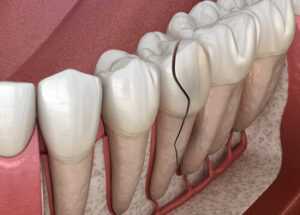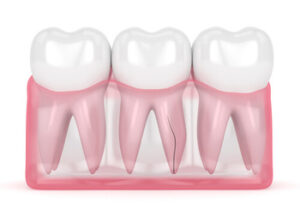If you are facing persistent tooth pain, sensitivity, or swelling, your dentist may recommend a root canal treatment. This common dental procedure is designed to remove an infected pulp, alleviate pain, and save your natural tooth from extraction. However, one of the most common concerns patients have is the cost of root canals.
Understanding the cost of a root canal, the factors influencing it, and whether private health insurance covers it can help you make an informed decision. Here’s everything you need to know.
What is a Root Canal Treatment?
A root canal treatment is a highly common dental procedure designed to save a natural tooth that has been severely damaged by deep decay, infection, or trauma. This procedure eliminates the infected pulp inside the pulp chamber, preventing further infection and preserving the tooth root structure.
Many people fear root canal therapy, but modern dental techniques and local anaesthetic make it a relatively comfortable procedure. The goal is to alleviate pain, treat the infection, and restore function to the affected tooth.
Why is a Root Canal Needed?

- The tooth pain is persistent and worsens when chewing.
- The tooth is sensitive to hot or cold, and the discomfort lingers.
- There is swelling or pus near the affected tooth.
- The tooth has darkened due to a dead pulp.
- A dental abscess has formed, indicating an advanced infection.
What is the Root Canal Procedure?
A root canal treatment involves extracting the infected pulp, thoroughly cleaning the root canal system, and sealing the tooth root to prevent future infection. This procedure generally takes one or two visits to a dental clinic and includes the following steps:
Step 1: Initial Consultation and Diagnosis
- Your dentist will conduct an oral health examination, checking for signs of infection or damage.
- Dental X-rays are taken to assess the severity of decay and determine the structure of the root canal system.
- A local anaesthetic is applied to numb the tooth and surrounding area, ensuring a comfortable procedure.
Step 2: Removing the Infected Pulp
- A small opening is made in the tooth to access the pulp chamber.
- The infected or dead pulp is thoroughly removed using specialised dental instruments.
- The inside of the root canal system is cleaned and shaped to remove bacteria and infected tissue.
Step 3: Disinfecting and Sealing the Root Canal
- The empty root canal system is disinfected to eliminate any remaining bacteria.
- A temporary filling may be placed if multiple visits are required.
- After thorough cleaning, the canals are sealed with gutta-percha, a biocompatible material, to block bacteria and prevent reinfection.
Step 4: Restoring the Tooth with a Crown
- Following a root canal procedure, the treated tooth may become fragile and often needs a dental crown for increased strength and protection.
- A customised dental crown is placed over the tooth to restore its function and appearance.
How Long Does a Root Canal Take?
A root canal treatment usually takes 60 to 90 minutes per session. Depending on the complexity of the case, the procedure may require:
- One visit if the infection is mild
- Two visits if the infection is severe and requires additional cleaning
After the procedure, mild discomfort is normal, but most patients return to normal activities within a day.
What Happens After a Root Canal?
After a root canal treatment, proper aftercare is essential to ensure healing:
- Avoid chewing on the treated tooth until a dental crown is placed.
- Take prescribed medications if needed to manage mild pain.
- Practise good oral hygiene habits such as brushing, flossing, and scheduling regular dental check-ups to maintain dental health.
With good care, a root canal-treated tooth can endure a lifetime, preventing the need for tooth extraction or costly dental implants.
How Much Does a Root Canal Cost in Australia?
The cost of a root canal varies based on factors like the tooth’s location, the procedure’s complexity, and the need for a dental crown.
Estimated Root Canal Cost
The cost of a root canal leans on factors like the tooth’s location, the procedure’s complexity, and whether a dental crown is needed. In Australia, the starting costs for a root canal procedure are:
- Front teeth: from $900
- Premolars: from $1,000
- Molars: from $1,500
Additional Costs to Consider

- Initial consultation: from $50
- Dental X-rays: from $100
- Temporary filling: from $100
- Dental crown: from $1,500 (if required)
- Out-of-pocket expenses, depending on dental insurance coverage
The total cost will vary depending on your dental clinic, the severity of the infection, and whether additional dental procedures are needed. It is always recommended that you check with your dental practice about payment options or financing plans to manage the root canal treatment cost-effectively.
Factors Affecting Root Canal Cost
Several factors impact the cost of a root canal, including:
1. Location of the Tooth
- Front teeth generally cost less as they have a single root canal.
- Molars and premolars are more expensive due to their multiple canals and complex structure.
2. Severity of the Infection
- If the infected pulp has led to an abscess, additional treatments may be needed, increasing costs.
3. The Need for a Dental Crown
- A dental crown is often required to protect the treated tooth, which adds significantly to the total cost.
4. Private Health Insurance Coverage
- Some private health insurance policies cover root canal therapy, reducing out-of-pocket expenses.
5. The Dentist’s Experience
- The experience of the dentist can influence the cost of a root canal, as more experienced professionals typically charge higher fees for their expertise. However, a skilled general dentist can still provide effective treatment at a more affordable rate.
What Happens If You Don’t Get a Root Canal?
Delaying or avoiding a root canal procedure can lead to serious complications, including:
- Severe infection that spreads to surrounding teeth.
- Formation of an abscess, potentially requiring tooth extraction.
- The need for a dental implant, which can cost upwards of $3,000.
By addressing an infected tooth early, you can prevent further complications and maintain better oral health.
Is Root Canal Treatment Covered by Private Health Insurance?
Some dental insurance policies cover root canal therapy, but the amount covered varies. If you have private health insurance, check whether your policy includes:
- Root canal treatment cost coverage
- Coverage for dental crowns
- What percentage of the total cost is reimbursed
- Any required co-payments or out-of-pocket expenses
If your insurance does not fully cover the cost of a root canal, some dental practices offer in-house payment plans to ease the burden of paying for dental services.
Root Canal or Tooth Extraction: Which is the Better Option?
When dealing with a severely infected tooth, your dentist may offer two treatment options: a root canal procedure or a tooth extraction. Both options have their pros and cons, and the right choice depends on factors such as the condition of the affected tooth, overall dental health, and long-term costs.
Root Canal vs. Tooth Extraction: Key Differences Explained
A root canal procedure includes removing the infected pulp, thoroughly cleaning the root canal system, and sealing the tooth root to prevent reinfection. In many cases, a dental crown is cemented on top of the treated tooth for added protection. This treatment preserves your natural tooth, prevents shifting of surrounding teeth, and maintains dental health. However, it requires multiple visits and has a starting cost of $900, with an additional $1,500 or more if a dental crown is needed.
A tooth extraction, on the other hand, is a quicker and more affordable option, with a starting cost of $150. It is often necessary if the infected tooth is beyond saving due to severe decay, trauma, or a failed root canal. However, extracting a tooth can cause teeth to shift, lead to bite misalignment, and result in bone loss in the jaw. To restore function and prevent further complications, a dental implant (from $3,000) or dental bridge (from $2,000) is often required, making the long-term cost higher than a root canal treatment.
Which Option is Better?
A root canal treatment is generally the better option when the tooth can still be saved, as it maintains dental health, prevents complications, and eliminates the need for costly tooth replacement procedures. However, if the tooth is too damaged or if there is an unsuccessful previous root canal treatment, tooth extraction may be necessary. While an extraction might seem like the more affordable choice initially, the long-term costs of replacing the lost tooth using a dental implant or bridge can make it more expensive over time.
If you are unsure which option is best for your situation, it is always recommended to consult a dental clinic for a thorough evaluation. Your dentist can help you make the decision and provide a treatment plan that best suits your oral health and budget.
Can a Root Canal Fail?
A root canal treatment is generally a highly successful procedure, with most treated teeth lasting a lifetime when properly cared for. However, in some cases, a failed root canal can occur, leading to persistent symptoms or the return of infection. Understanding the reasons for failure, recognising the signs, and knowing what to do if it happens can help prevent further dental health complications.
What Causes a Root Canal to Fail?
A root canal procedure involves cleaning and sealing the root canal system to remove infection and prevent bacteria from re-entering. However, several factors can contribute to failure, including:
- Incomplete cleaning of the root canal system – Some root canals have complex or hidden pathways that may not be fully cleaned during the initial procedure.
- New infection due to poor sealing – If the pulp chamber is not properly sealed, bacteria can enter and cause reinfection.
- Cracked or fractured treated tooth – A weak or compromised tooth may develop cracks, allowing bacteria to reach the tooth root.
- Delayed placement of a dental crown – If a dental crown is not placed soon after the root canal therapy, the tooth may become re-infected or weakened.
- Repeated dental procedures on the same tooth – Additional work on the treated tooth can weaken the structure and compromise the root canal treatment.
- Undetected canals or accessory roots – Some teeth have extra root canals that may not have been identified and cleaned during the initial procedure.
Signs of a Failed Root Canal
If a root canal treatment fails, symptoms may appear weeks, months, or even years after the procedure. Some common signs include:
- Persistent or recurring tooth pain
- Swelling in the gums or face near the treated tooth
- Sensitivity to pressure when biting or chewing
- A pimple or abscess on the gums
- Darkening or discolouration of the treated tooth
- The presence of pus or a persistent foul taste in the mouth.
These symptoms indicate that the infection may have returned or that the root canal treatment was not fully effective.
What Are the Fixing Options for a Failed Root Canal?
If a root canal procedure fails, your dentist may recommend one of the following solutions:
1. Root Canal Retreatment
A second endodontic treatment may be performed to remove the infection, clean the root canal system, and reseal the tooth root. This option is often recommended when the initial procedure is not fully effective, but the tooth is still salvageable.
2. Apicoectomy (Root-End Surgery)
In some cases, if retreatment is not successful or possible, a minor surgical procedure called an apicoectomy may be performed. This approach removes the tip of the tooth root and seals it to prevent reinfection.
3. Tooth Extraction and Replacement
If the root canal treatment has failed repeatedly or the tooth and surrounding area are too damaged, a tooth extraction may be necessary. In such cases, a dental implant or dental bridge can replace the missing tooth.
How to Avoid a Root Canal in the Future

- Regular dental check-ups to identify issues early
- Maintaining proper oral hygiene, including daily brushing and flossing
- Preventing deep decay by treating cavities as soon as they appear
- Wearing a mouthguard to protect teeth if you grind them
Taking preventive measures can help you avoid tooth decay, infections, and costly dental treatments.
Is a Root Canal Worth It? Here’s the Bottom Line
A root canal treatment effectively removes infection, relieves pain, and helps retain your natural tooth. While the cost of a root canal depends on factors such as the tooth’s location, the procedure’s complexity, and whether a dental crown is required, it is often a more affordable alternative to tooth extraction and replacement with a dental implant or bridge. If you are experiencing tooth pain, book a consultation with Dental 266 at (02) 9051 0600 to discuss your treatment options and receive expert care for your oral health.
Note: Any surgical or invasive procedure carries risks. Before proceeding, you should seek a second opinion from an appropriately qualified health practitioner.
References
Medical News Today. (n.d.). Root canal: Procedure, benefits, and risks. Retrieved from https://www.medicalnewstoday.com/articles/142780
Healthline. (n.d.). Tooth extraction: Procedure, risks, and recovery. Retrieved from https://www.healthline.com/health/tooth-extraction
WebMD. (n.d.). Mouth guards: Everything you need to know. Retrieved from https://www.webmd.com/oral-health/mouth-guards
Forbes. (n.d.). How much do dental implants cost?. Retrieved from https://www.forbes.com/health/dental/how-much-dental-implants-cost/
Drugs.com. (n.d.). Pain: Symptoms, treatment, and medications. Retrieved from https://www.drugs.com/condition/pain.html






